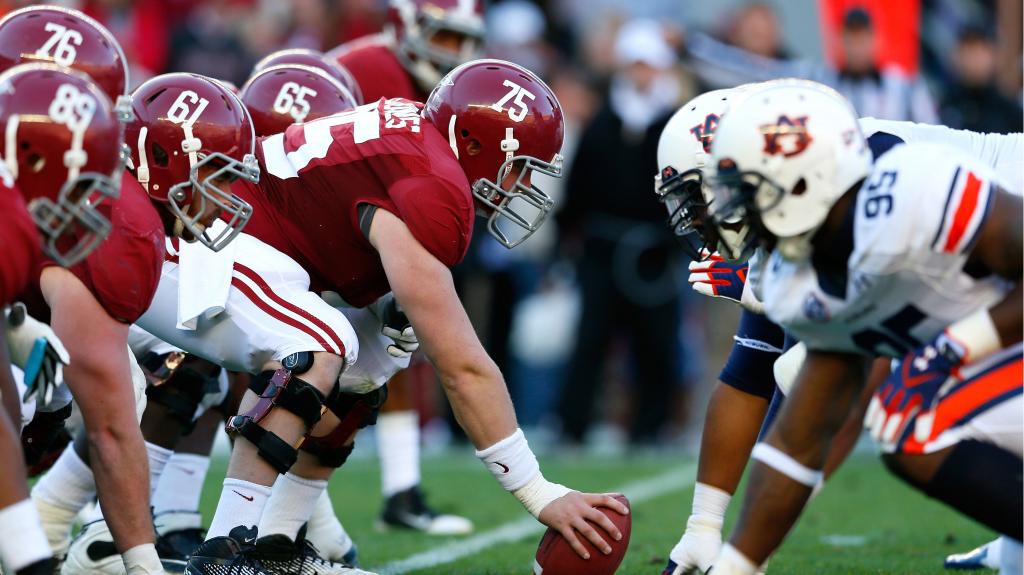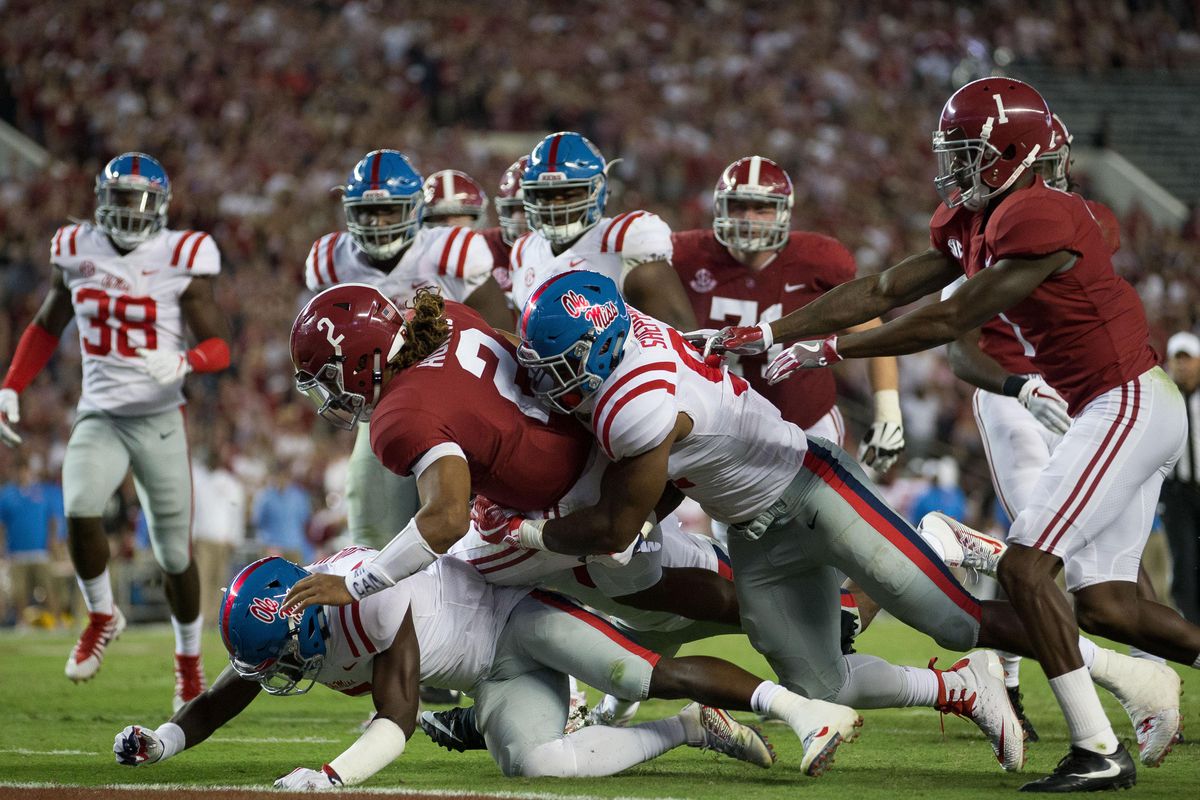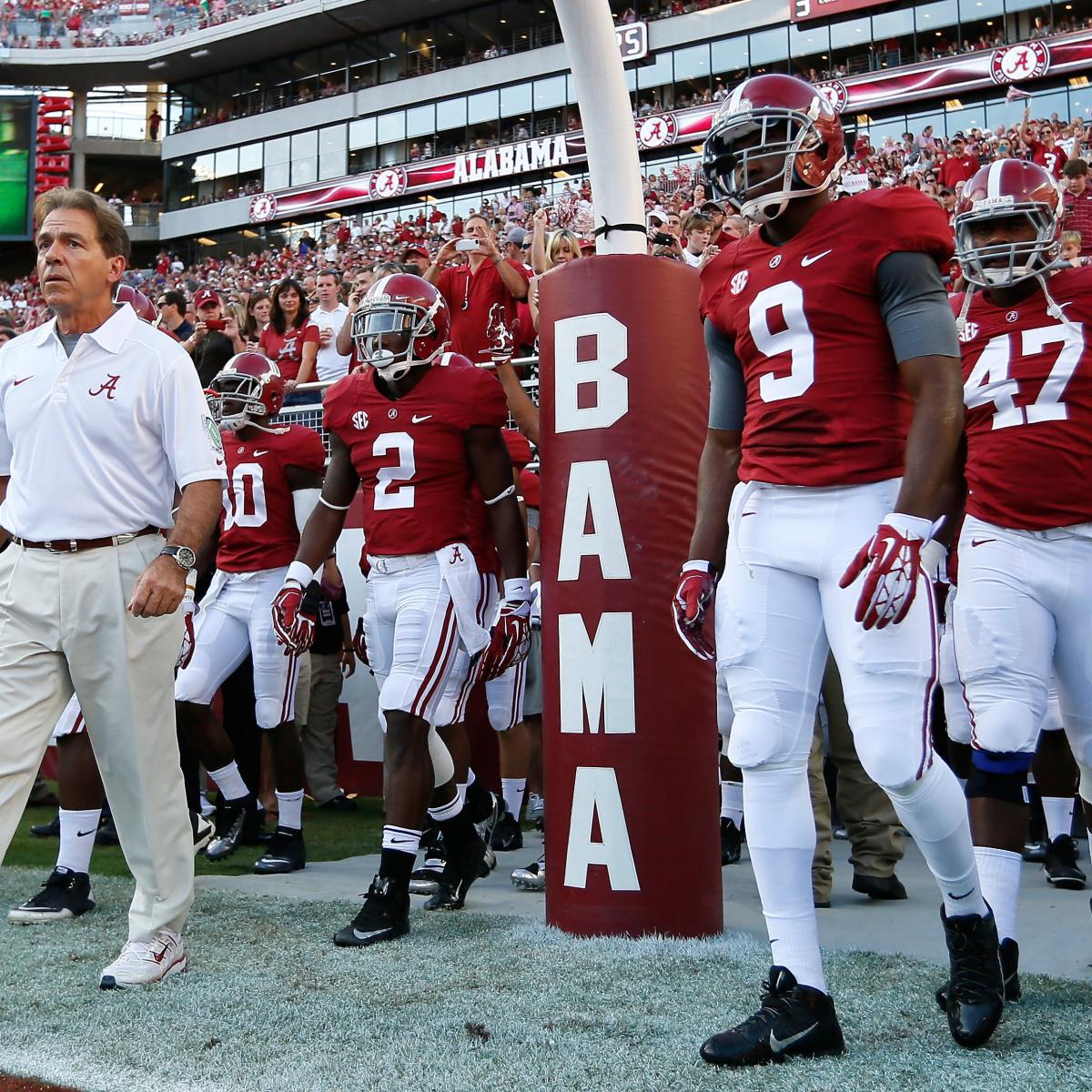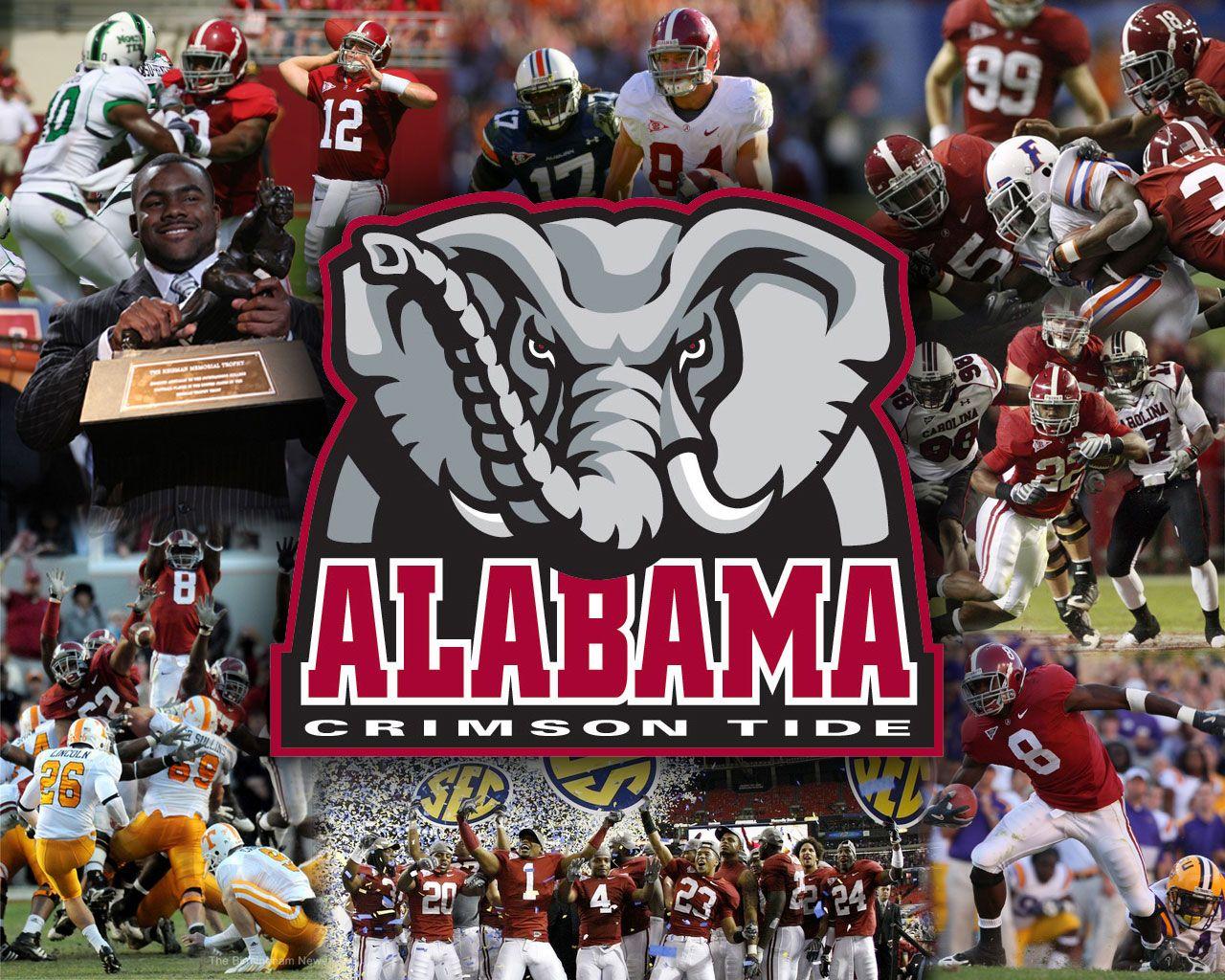Alabama Football
Alabama Football is
one of the most storied programs in all of college football, and it shows no
signs of slowing down.
It claims 18 national championships, as well as 28 Southeastern Conference Championships.
The SEC is considered the toughest and best conferences in the sport, so this is quite an impressive record.
After several very rough and turbulent years, the Athletic Director of Alabama hired Nick Saban in 2007, and the dynasty that used to be Alabama Football has returned again.
However, things have not always been this good in this historic program, as it has had some very challenging years.
The History of Alabama Football
 Alabama-Auburn Game
Alabama-Auburn GameThe University of Alabama began in the year 1892, and its first game was not what current fans are used to.
It was a victory over various Birmingham schools, and in these early years, it was called Birmingham High School.
The father of Alabama Football was William G. Little, who had been introduced to the then rugby like sport while in an Academy in New Hampshire.
He enrolled in the University of Alabama in 1892, and quickly organized a team as its first captain, and played under the first coach at the school, E.B. Beaumont.
The Alabama Crimson Tide begin its ascent into the national scene when the President at the time, George H Denny, hired Xen Scott to coach the school in 1919.
His hunch paid off, as the school had its best season ever in Scott’s first year.
Alabama was given the nick-name the “Crimson Tide” by a sports reporter form the Birmingham-Age-Herald, Hugh “Doc” Robets, in 1907.
After watching Alabama play its rival Auburn to a 6-6 tie in Birmingham, Mr. Roberts described the game as a “crimson tide” as the teams played to a draw in very muddy conditions.
The term “crimson tide” was fairly common back then, described life or blood, most often in the context of war.
Alabama’s 1925 team earned the national title with a 10-0 record, that included the historic win over Washington with a 20-19 score.
This win was considered historic, as it was one of the most important games for Southern football as it has social, cultural, as well as political implications.
It also put the South on the map for college football, as it was the first time a team form the south played in a national event.
Both political sides were very divided over this event for several reasons.
The Northern sports writers portrayed all of the people from Alabama as unreconstructed hayseeds, and as a result, had no chance to win.
The Southern writers, fresh from Reconstruction, saw the game as part of the Civil War, and if they won, would give them redemption.
The following season Alabama Football returned to the Rose Bowl, and tied Stanford, 7-7.
The Early Coaches for Alabama Football
 Alabama-Ole Miss Game
Alabama-Ole Miss GameMr. Scott finished with s record of 29-9-3, and after his health begin to fail, he resigned.
The President of the University, then turned to Wallace Wade, a veteran of WWI, to coach the team in 1923.
During the next 8 seasons, Wade again put Alabama Football on the national map, with a 21-13-3 record.
During this time frame, he led the team to four Southern titles, 3 Rose Bowl appearances, and 3 National Championships.
Wade was the coach that won the 1925 Rose Bowl, and in his final season, he went 10-0 again, defeated Washington State 24-0 on January 1, 1931.
Frank Thomas took over form 1931-1946, and had a record of 115-24-7, and was a former Notre Dame quarterback.
In the year 1933, after the creation of the Southeastern Conference, Alabama won the first new conference championship.
The next year his team went 10-0 that included a 29-13 win over Standford in the 1935 Rose Bowl.
Among his star players were Don Hutson, Dixie Powell, and Paul Bryant.
He also became the first coach that had appeared in all four major bowls at the time; the Rose, Cotton, Orange, and Sugar.
He stepped down in 1946 will failing health, and was elected to the College Football Hall of Fame in 1951.
“Red” Drew followed Thomas, and his overall record was 54-28-7, and took teams to the Sugar, Orange, and Cottons Bowls.
After a losing season in 1954, Drew stepped down, and after three dismals seasons under Jenning’s “Ears” Whitworth, Alabama Football turned to Paul “Bear” Bryant.
The Modern Coaches for Alabama Football
 Alabama Football Entering the Field
Alabama Football Entering the FieldAny fan of Alabama Football knows the name Paul “Bear” Bryant, who was chosen to be the next coach, to duplicate his success he had already had.
He had turned around the programs at the University of Maryland, Kentucky, as well as Texas A & M, and Alabama was next.
For the next 25 years, the legendary coach would become the pride of the state for one simple reason; his elite football programs.
No school in college football at the time could match the 232 victories, and the 6 National Titles, in the years 1961,1964, 1965, 1973, 1978, and 1979.
Mr. Bryant became the most dominant figure in college athletics, and many said his records would never be matched.
In his 4th year as head coach, his 1961 team won the National Championship, with a 11-0 record.
His stars on the team included Pat Trammel at quarterback and Lee Roy Jordan at linebacker.
The quarterbacks that would follow Trammel included Joe Namath and Kenny Stabler.
However, in the late 1960’s Bryant’s teams hit some subpar seasons, so he made a radical change in 1971.
He installed a wishbone offense, and it was one of the best kept secrets in college football.
It set the stage for the National Title runs in the 1970’s, and Bryant announced his retirement in 1982.
Then, to everyone’s’ shock, the legendary coached suddenly passed away in January 1983.
More than 100,00 fans lined the Interstate from Tuscaloosa to Birmingham, where he was buried.
Mr. Bryant was followed by Ray Perkins, until 1986, and was replaced with Bill Curry.
His tenure only last three years, but he did couch the future Clemson coach, Williman “Dabo” Swinney.
Gene Stallings replaced him, and was a former player for the “Bear”.
From 1990 to 1996 Stallings’ teams went 70-16-1, including a 13-0 season in 1992 and a National Championship.
His era ended in 1997, and was replaced by Mike Dubose, who coached Alabama Football from 1997-2000.
The 1999 team won the SEC title and earned a sop in the Orange Bowl.
Then things went south for Alabama Football for several years, due to several coaching changes and NCAA sanctions.
Dubose was fired and replaced by Dennis Francione, who remained for only 2 seasons.
The school then turned to Mike Price from Washinton State, who never coached a single game due to off-the field misconduct.
Next came Mike Shula, a former quarterback, and he coached from 2003 to 2006 with a 26-23 record.
The Nick Saban Era for Alabama Football
 Alabama Logo
Alabama LogoNick Saban’s first year, the team went 7-6.
However, the team really started to come together, and in January 2010, his 4th year, Alabama won its 13th national championship after a 14-0 season.
The next year, Alabama won their third BCS championship, with a 42-14 win over Notre Dame.
In the year 2016 Alabama Football again won the BCS game, beating Clemson 45-40.
Nick Sadan’s teams have won a total of 6 National Championships.
Nick Saban’s record at Alabama is a whopping 177 games won, and only 24 lost.
That is why most people around college football called him the GOAT—The Greatest of All time.
What will 2023 bring—at the time of this writing—we will wait and see.
References
https://encyclopediaofalabama.org/article/university-of-alabama-football/

Alabama Gift Store
Numerous Items for You and Your Family to Enjoy
See it here at the Gift Store
Copyright 2019-2023 Alabamabackroads.com
All Rights Reserved
















